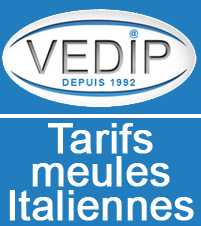Thermal flat glass tempering. Continuous furnaces
1/Introduction
There are two main reasons for glass tempering
-To harden the glass surface
To prevent, in case of glass breaks, to have very dangerous big pieces of broken glasses
A/Different glass tempering
There are two different glass tempering but only one (the thermic one) reaches the 2 targets
Chemical tempering
Thermic tempering
1/The chemical tempering
The glass is dived inside hot salts bath. The bath chemical composition depends on the type of glass. The target is to insert at the glass surface more important dimensions cations coming from the salt bath, to replace the smaller ones which are already inside the glass. This is possible thanks to the temperature increase (more than 400 degrees Celsius) which allows the cations to move.
During the cooling the cations movement stops and the biggest are kept in a smaller space than the one they normally need. So they are going to take more space and to harden the glass surface.
Moreover the surface is going to be in compression and increase the glass resistance to break.
But if the glass breaks the big dangerous glass pieces remain.
The chemical tempering is used for glass less than 5 mm thickness.
2/The thermic tempering
The idea is the same, to put the glass surface in compression. But a thermic way is going to be used.
The glass is heated (more than 600 Celsius degrees) in a furnace for a time depending the glass thickness (between 1 and 15 minutes). And quickly cooled down (with air under pressure).
The surface quickly cooled is going to be in compression and the internal part of the glass is going to be in extension
This way to temper has some advantages
The glass broke in small pieces (less than 1 cm²), so a lot less dangerous for people;
It is less expensive
It is possible to temper all kind of thicknesses
B/The machines for thermic tempering
The tempering vertical ovens
The tempering oscillating horizontal ovens
The tempering continuous horizontal ovens
2/Continuous horizontal tempering furnaces
The loading area is fed with glass in continuous way.
The heating area is a long tunnel where glass moves. At the end of the tunnel the glass reaches the temperature required and exit to be tempered with air under high pressure. He goes on moving in the cooling tunnel and reaches the unloading area.
The horizontal continuous tempering furnaces are for big series (automotive, appliance) and small thicknesses.








